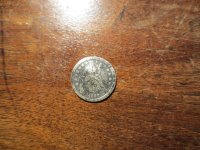GrizLeeBear
Hero Member
- Jan 18, 2013
- 555
- 383
- Detector(s) used
- Garrett GTI 1500
- Primary Interest:
- Metal Detecting
As a kid, back in the '50's, I was a small time collector, but not an investor. However, we learned that a PROOF coin was a mirror finish strike sold in a set and sealed in a hard plastic case. An UNCIRCULATED coin was one in a plastic sleeve, also sold in sets. By definition, any coin you could get your hands on was not Uncirculated. Any coin you find that has been touched, cannot be uncirculated. Yet I see a lot of pictures of people holding coins and claiming they are uncirculated. I believe the proper classification would be "Almost Uncirculated", or "Mint State". So, what is the basis for the claims? Not sure it really matters. Educate an old man. Thanks.
Amazon Forum Fav 👍
Upvote
0



 .
.

